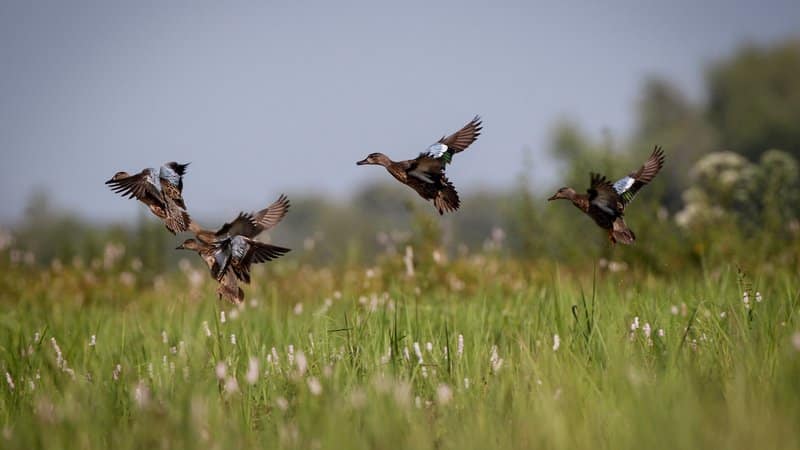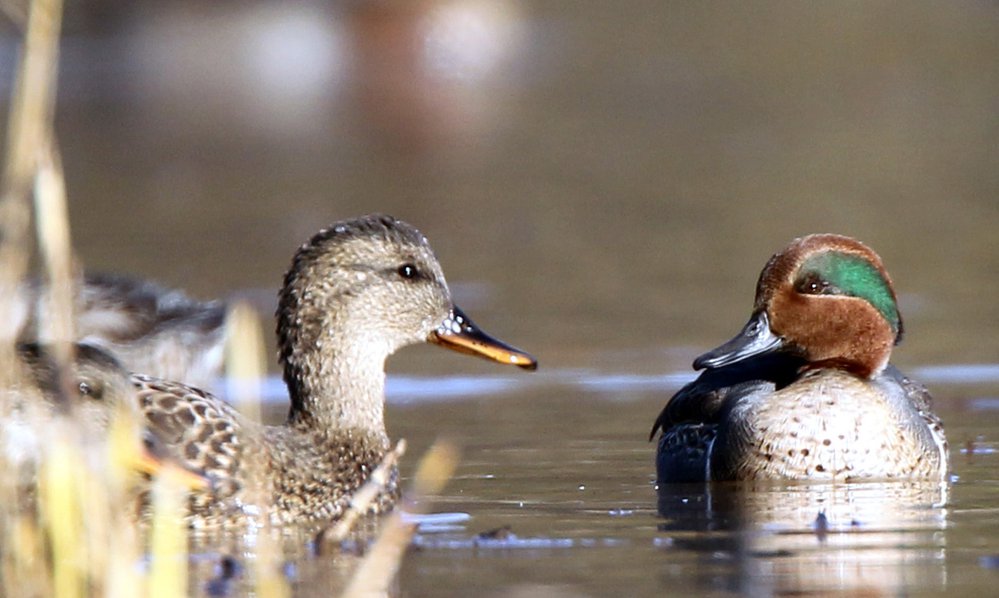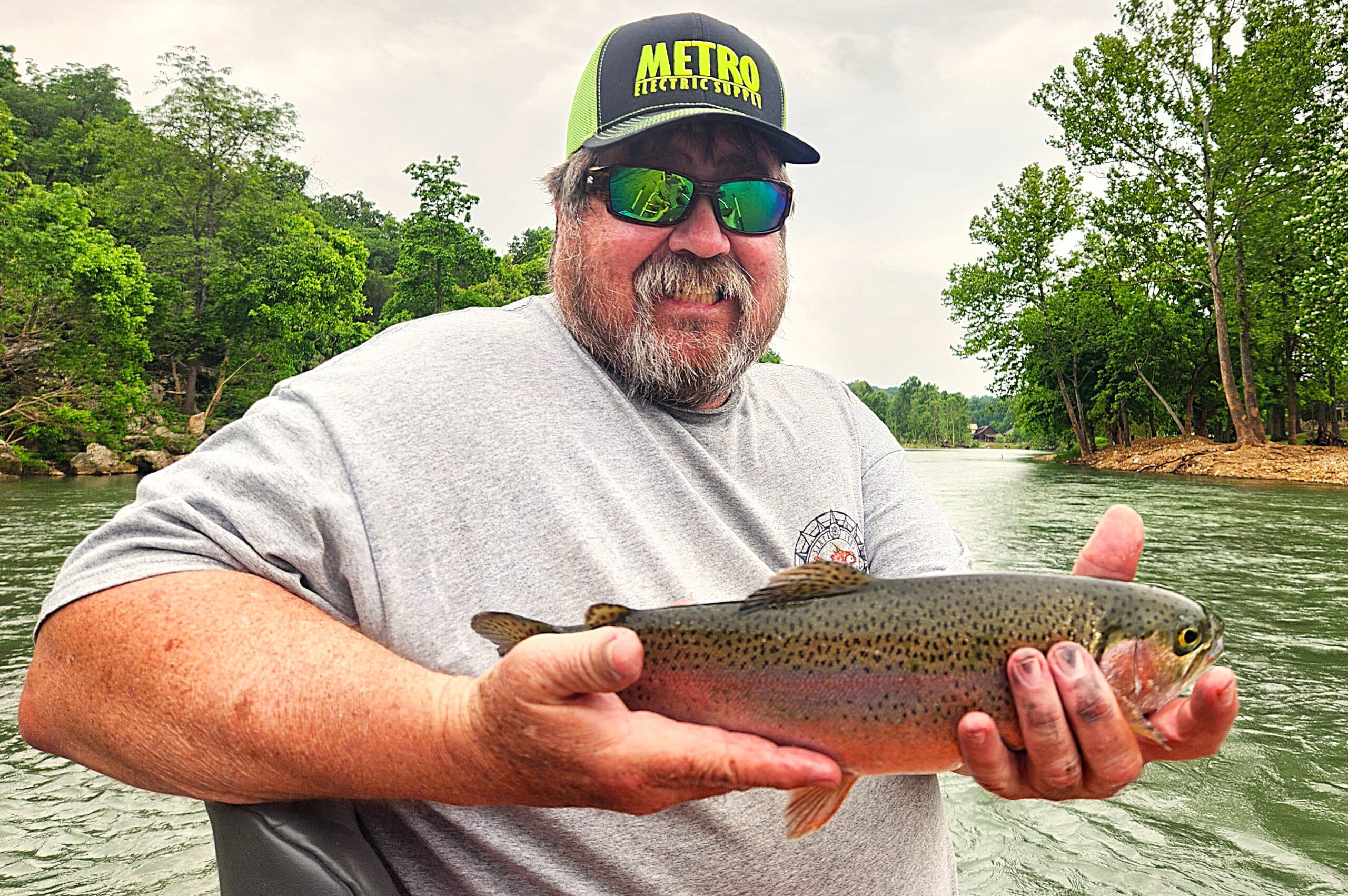Arkansas teal season opens Sept. 15
ON 09-13-2023

Sept. 13, 2023
Randy Zellers
Assistant Chief of Communications
LITTLE ROCK — Arkansas duck hunters will get their first shot at some early birds this Friday when the early teal season opens at sunrise.
The early teal season is open Sept. 15-30, so hunters can have an opportunity to harvest some of these small ducks that typically migrate before the rest of the crowd.
Teal, especially blue-winged teal, are the first ducks to fly south each year. Their migration patterns are linked much more to the length of daylight than to weather patterns.
Arkansas isn’t even halfway to the final destination for most blue-winged teal. They typically migrate as far south as South America, and hold the record for the longest waterfowl migration ever recorded through duck-banding data. A blue-winged teal that was banded near Oak Lake, Manitoba, was later harvested near Lima, Peru, more than 4,000 miles away.
That means the lion’s share of blue-winged teal are well on their way across the Gulf of Mexico by the time regular duck season rolls around. Green-winged teal, however, will be present throughout most of Arkansas’s duck season, but a few will mix with the early bluewings and mill about the state if they have enough flooded wetlands to feed and rest.
Whether their wings sport powder blue shoulder patches or iridescent green secondary feathers, both of Arkansas’s common teal species will be on a bug hunt. Insects give the birds much of the fuel and protein they need for their long flight, and no habitat type in September offers the buffet of bugs and other nutrients quite like managed moist-soil.
“We have some moist-soil units that we’re irrigating right now, and that will provide a temporary flush of habitat for teal as they come through, AGFC Wetlands Program biologist Jason Jackson said. “We’ll pull that water back off before teal season is over to promote growth and seed production for the fall and winter migration, but while it’s flooded it will be primo habitat.”

Arkansas Game and Fish Commission biologists point out that most of the early teal action public land hunters will see in Arkansas will gravitate toward more permanent water on lakes and rivers.
Jason Carbaugh, AGFC biologist in Jonesboro, said many hunters in his area seek out the smaller AGFC lakes in that part of the state as well as the St. Francis and Black rivers.
“I’ve only seen a few small flocks so far, but that can all change in a matter of days when it comes to waterfowl,” Carbaugh said.
Teal draw a few hunters in the southwest corner of the state, and AGFC regional biologist supervisor Griffin Park said Millwood Lake is the primary September duck-hunting destination. He warns that conditions may dictate more caution than usual.
“The lake is still low as part of a scheduled drawdown,” Park said. “Anyone boating there needs to be careful because a lot of stumps are exposed and stumps in the marked boat lanes are only a foot below the surface.”
Hunters may bag up to six of any teal (blue-winged, green-winged or the much less common cinnamon) per day. No other ducks are allowed. Hunting begins at sunrise instead of the typical 30-minute-before-sunrise start because hunters need a little more light to ensure they are shooting at teal and not mistaking them for wood ducks or other small ducks that may fly into the decoys. All other federal regulations apply during the hunt, including the requirement for nontoxic shot and the restriction for shotguns to only hold three shells at a time. Hunters need to have their hunting license as well as a federal migratory waterfowl stamp, state duck stamp and must be registered in the Harvest Information Program.
Early teal often fly in large groups and can be very tricky to hit. They tend to rocket into the decoy spread with a splash instead of easing down with a flutter of wings. They’re also likely to land in vegetation that is still tall and green, which can obstruct your shot. Hunters typically use No. 4 or 6 shot when pursuing these ducks. The smaller size allows more shot in the pattern and encourages closer shots, which help give hunters one more look at the duck for a positive identification.
Visit https://www.agfc.com/en/hunting/migratory-birds/early-migratory/ for more information on early teal season.
Recent News
Subscribe to Our Weekly Newsletter E-mails
Don’t miss another issue. Sign up now to receive the AGFC Wildlife Weekly Newsletter in your mailbox every Wednesday afternoon (Waterfowl Reports are published weekly during waterfowl season and periodically outside the season). Fishing Reports arrive on Thursdays. Fill in the following fields and hit submit. Thanks, and welcome!


